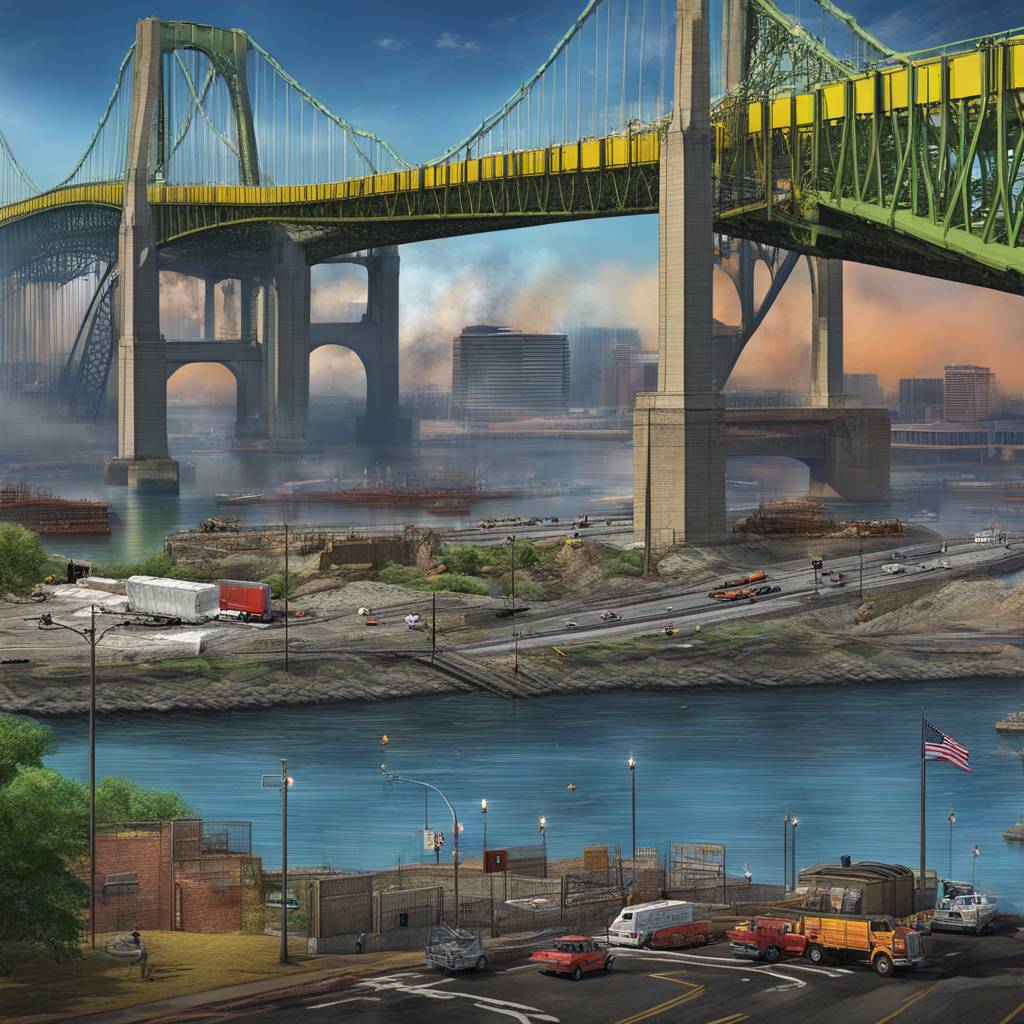The safety investigation into the Francis Scott Key Bridge collapse in Baltimore, Maryland, will include an examination of whether contaminated fuel played a role in a cargo ship losing power and crashing into the bridge. The container ship, named the Dali, remained stuck on a pillar of the collapsed bridge, and rescue crews transitioned their efforts from a search and rescue operation to a recovery operation. The ship experienced power issues and a loss of propulsion, with the vessel eventually going dead, leaving crew members in darkness and smelling of burned fuel. Despite attempting to drop anchors to stop drifting, the ship issued a mayday call before the collision occurred.
Ship blackouts are uncommon but pose a significant risk to vessels at sea, particularly if caused by contaminated fuel affecting main power generators. Investigations by the National Transportation Safety Board will focus on the operations and safety record of the ship, including reviews of prior inspections and any deficiencies noted. Recorders from the vessel will be secured to understand the events leading up to the crash. The ship, built by South Korea’s Hyundai Heavy Industries in 2015, has undergone numerous port state control inspections, with some deficiencies noted but no detentions reported.
Operated by Singapore-based Synergy Marine Group, the Dali was carrying cargo for A.P. Moller-Maersk and owned by Singaporean company Grace Ocean Pte. The ship was traveling from the Port of Baltimore to Sri Lanka, with two tugboats assisting in its departure before the crash occurred. The vessel had two pilots and 22 crew members from India on board. The typical speed for ships in the area is around 9.2 mph, and larger vessels like the Dali must maintain a certain speed to avoid being affected by winds and currents.
The collapse of the Francis Scott Key Bridge is expected to result in a significant number of insurance claims, covering the loss of the structure itself, disruptions to businesses at the port, and potential claims from victims of the crash against the ship operator. The bridge, constructed in 1977 at a cost of over $60 million, would be valued at approximately $300 million when adjusted for inflation today. Investigations into the cause of the bridge collapse will be comprehensive, taking into consideration a variety of factors including potential issues with contaminated fuel affecting the cargo ship’s power and leading to the collision.
Overall, the safety investigation into the Francis Scott Key Bridge collapse in Baltimore will involve multiple entities working together to determine the root cause of the incident. The investigation will examine the ship’s operations and safety record, including prior inspections and any deficiencies noted on those occasions. Ford will investigate whether contaminated fuel was a factor in the ship’s loss of power and crashing into the bridge, with the ultimate goal of preventing similar accidents in the future through improved safety measures and regulations.


